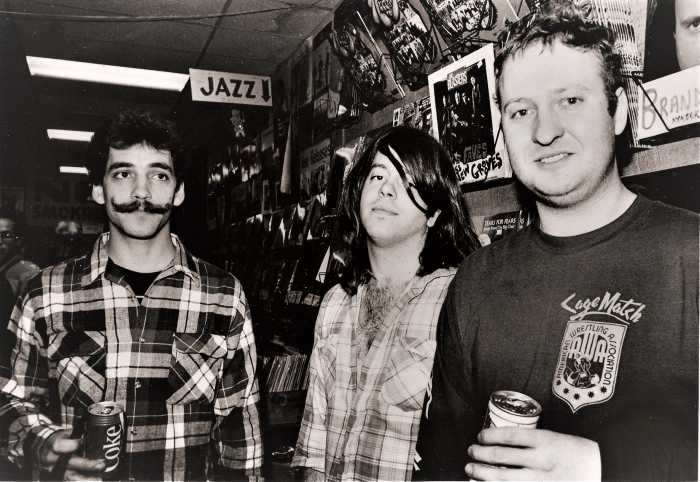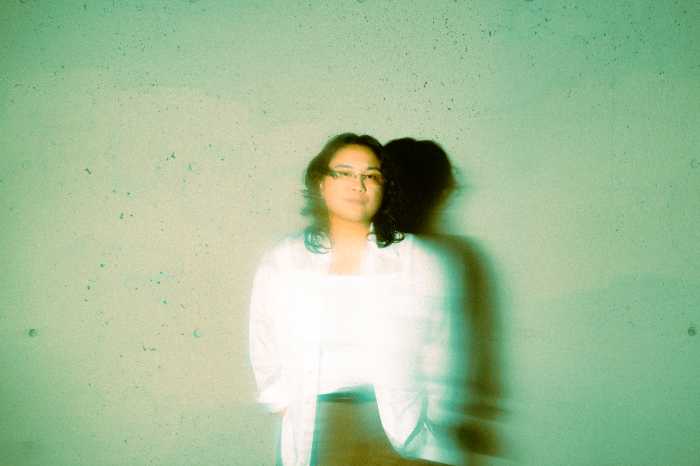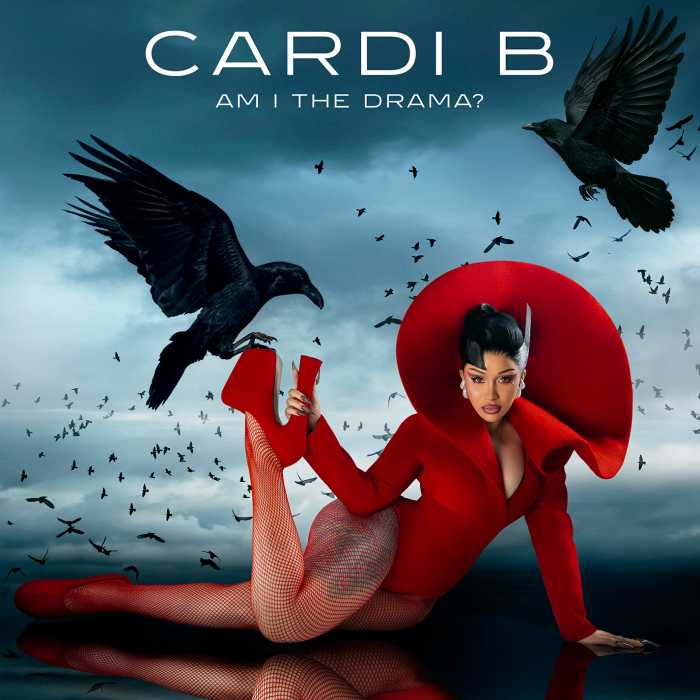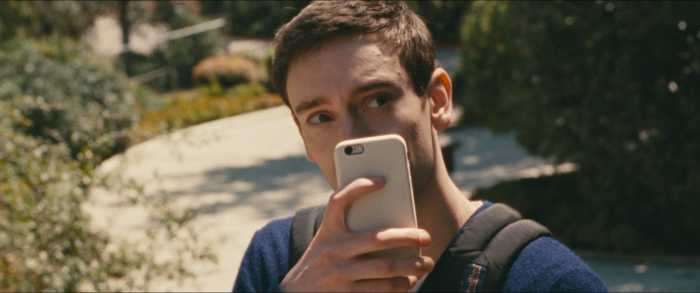BY GUS SOLOMONS JR. | An intriguing publicity photo resembling a prehistoric predator piqued my interest in seeing Jolene Bailie, a performer I'd never heard of. A Winnipeg-based solo performer, she's a fabulous physical creature – long, lean, and limber, with a spine that twists and bends as supplely as rope. In her evening at Joyce SoHo, February 21-23, Bailie presented three dances choreographed by her and fellow Canadians Marie-José Chartier and Joe Laughlin, and a short film directed by Jeff McKay.
In her own piece, “Switchback,” Bailie wears a provocative costume, designed by her and Anne Armit, that's a fusion of armadillo and gladiator. The hood is topped with a ridge that continues down the back of her leotard, giving her a ridged back, and short strips hang from the waist like a Roman tunic.
Jolene Bailie falls well short of her potential.
Bailie basked by rectangular “pools” of shiny plastic on the floor that bathed her in reflected light, a product of Hugh Conacher's imaginative lighting design. She crouched, wrapped her legs around her arms, walked on the knuckles of her gloved hands, and slid in and out of full splits using formidable core strength. Backed by eerie electronic music by Aphex Twin and Jared Powell, Bailie exploited her extreme flexibility, twisting into yoga-like contortions.
In the first and last of the dance's six vignettes – separated by blackouts – the crested headdress hung in midair, dimly lit, posing the possibility that this dangerous-looking mythical creature was only a figment of our imagination. Except for the wonder of Bailie's impressive mobility and presence, however, the content of the dancing was so slight and the pace so protracted that it failed to engage the audience.
The same lack of choreographic conciseness also torpedoed Chartier's “Terrain,” in which a prone, spread-eagled Bailie – wearing sheer pajamas embossed with subtle rectangular patches that looked like an aerial view of farm land – revolved in a pool of light, then spent long minutes wriggling along the floor like an inchworm on her hyper-flexible back. A subsequent section of walking in squares and leaping along diagonals relieved the dynamic stasis, but set to an understated soundscape by Richard-G Boucher, the choreography remained more of an atmospheric study than a fully realized dance.
Laughlin's “Walking Thru Myself” was kinetically livelier but no less expressively inchoate. Bailie, in a stylishly flimsy frock by Armit, cavorted in a landscape of outsized, white letters, planted around the floor like an alphabet garden – A through J, with F upside down, J tipped over, and OK, plopped downstage. The brief but athletic dance began and ended with a flash of light on the words “the end” hung on the rear wall.
A looping pre-show video, “Jo's Toes,” created by Bailie's long time collaborator Conacher, from footage shot for another film, was an intriguing introduction to the powerful performer. Her feet hung in the air; they alighted, caressed each other, slid into perfect fifth position, and danced a jig. It's too bad her subsequent repertoire of dances didn't live up to her enormous potential as a dancer.


































